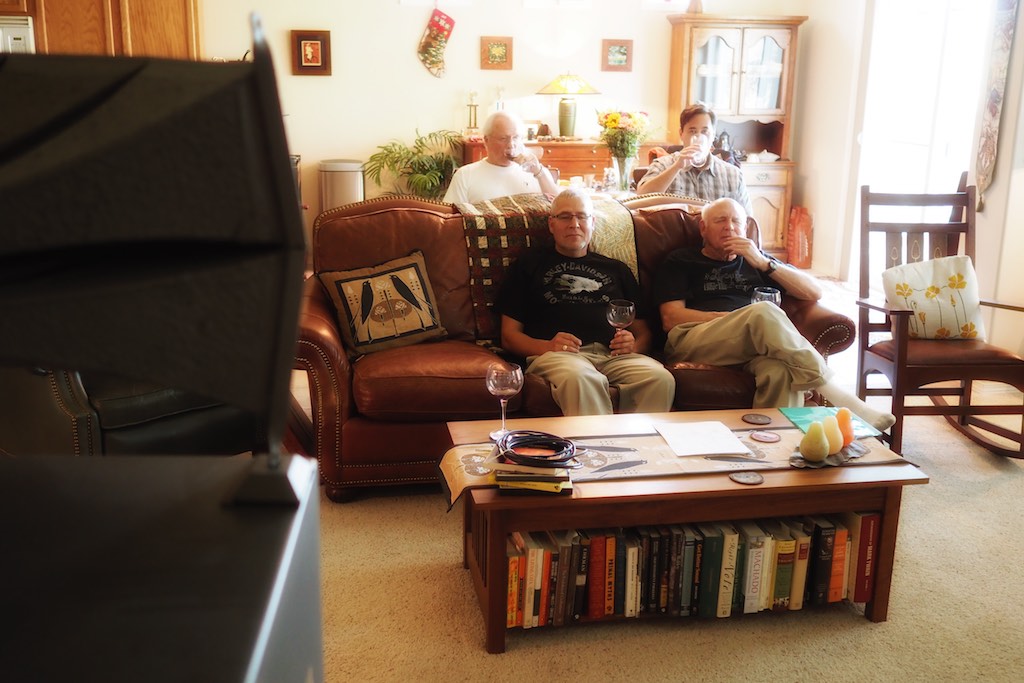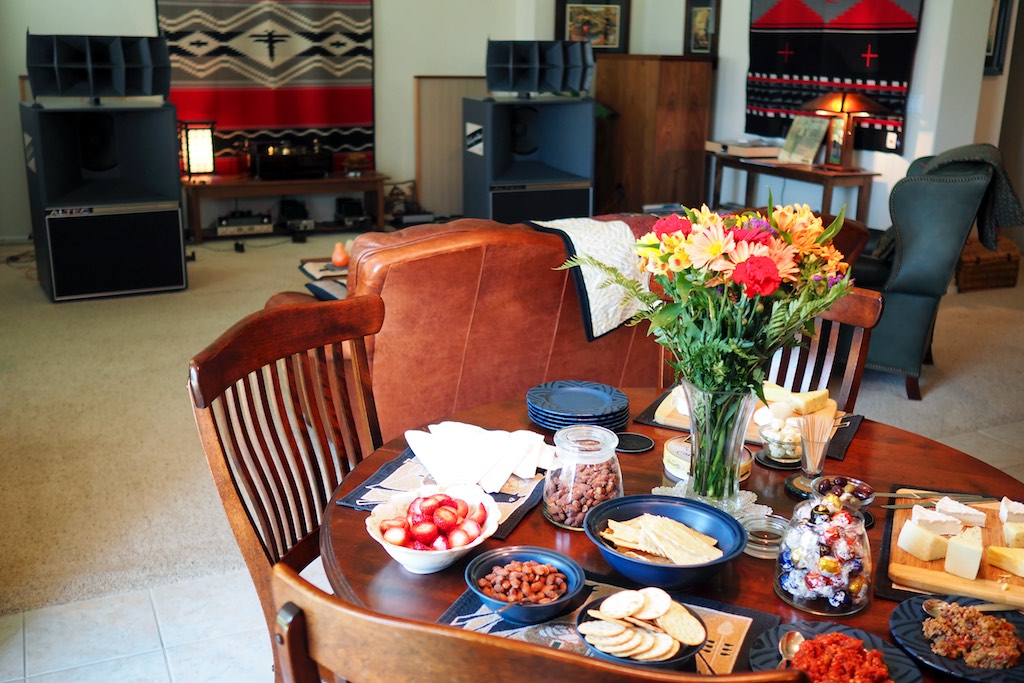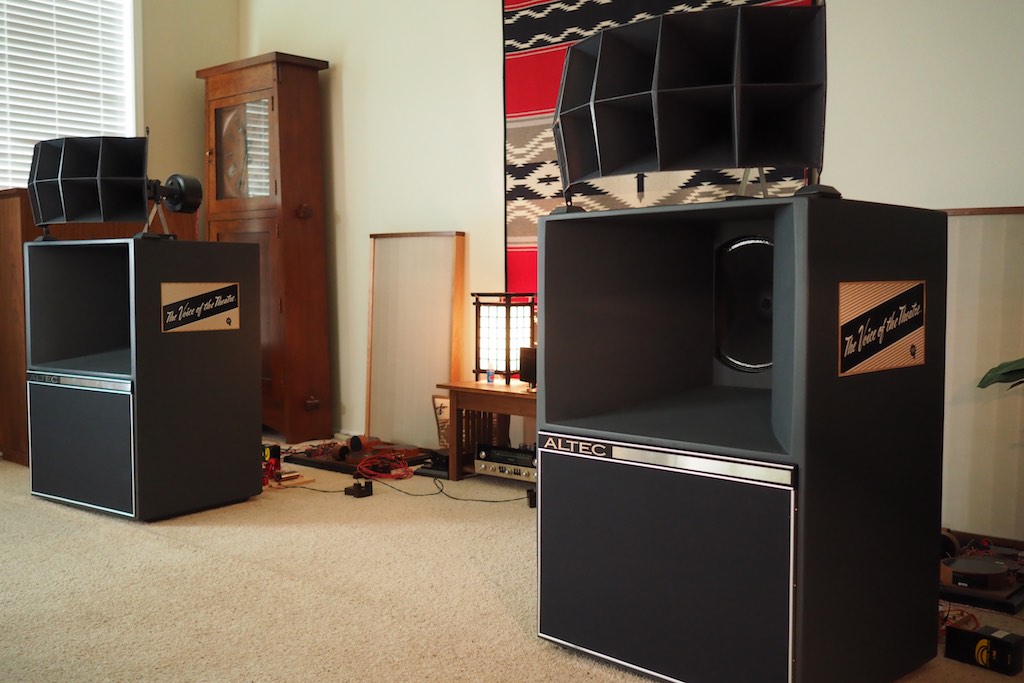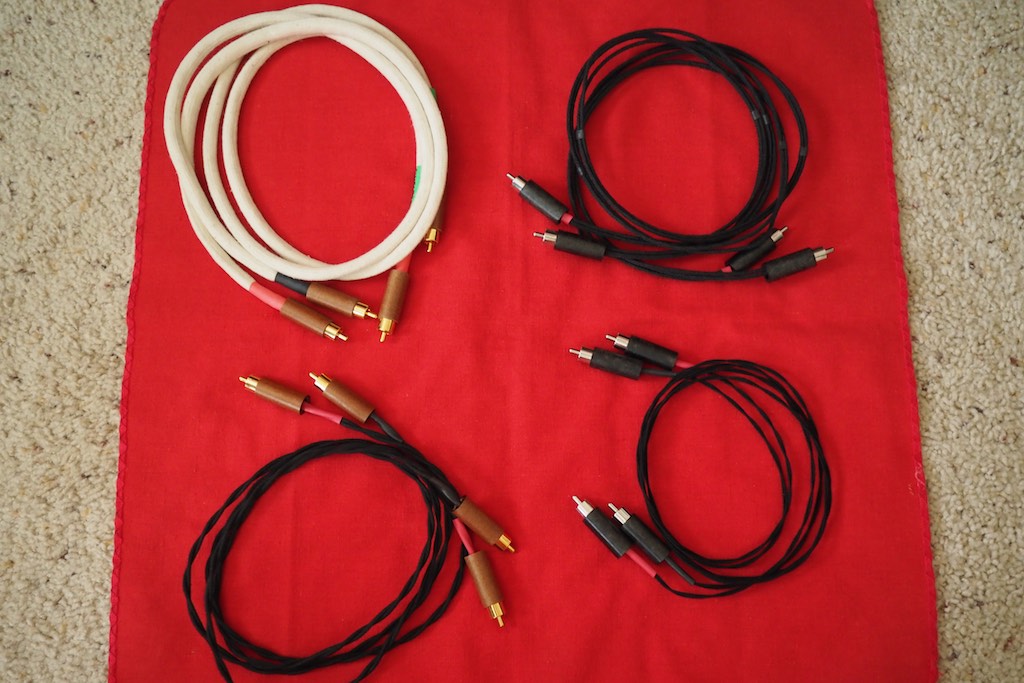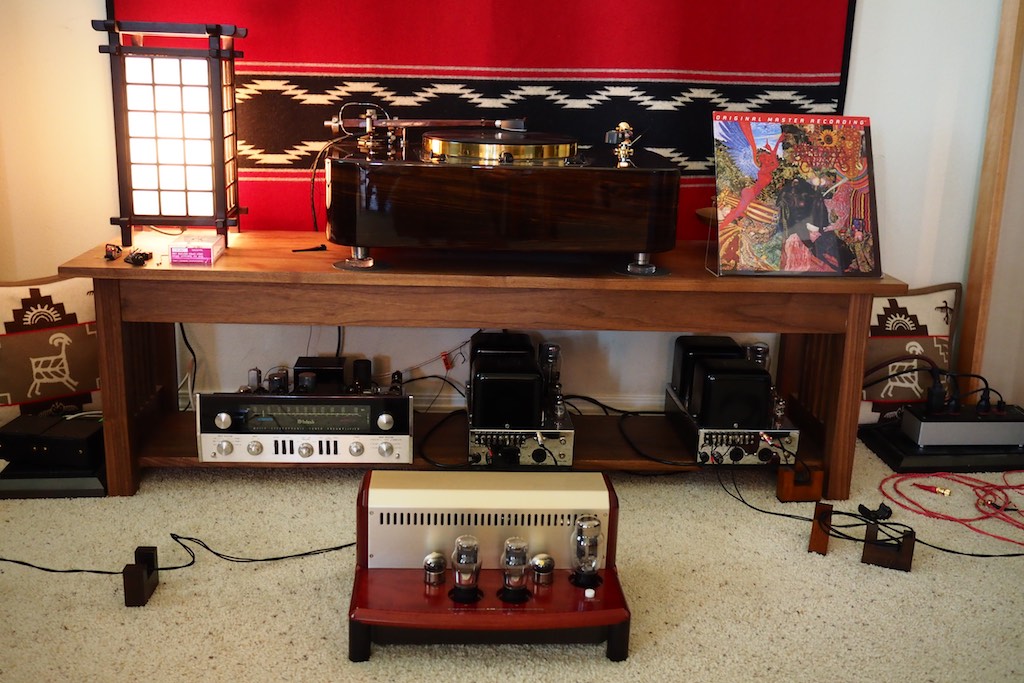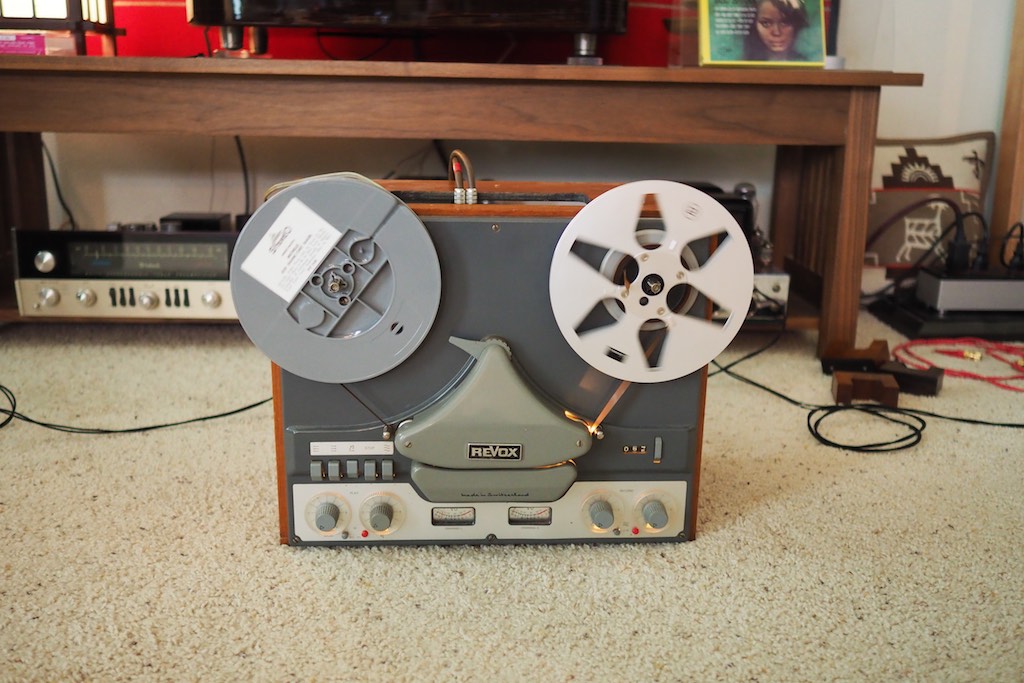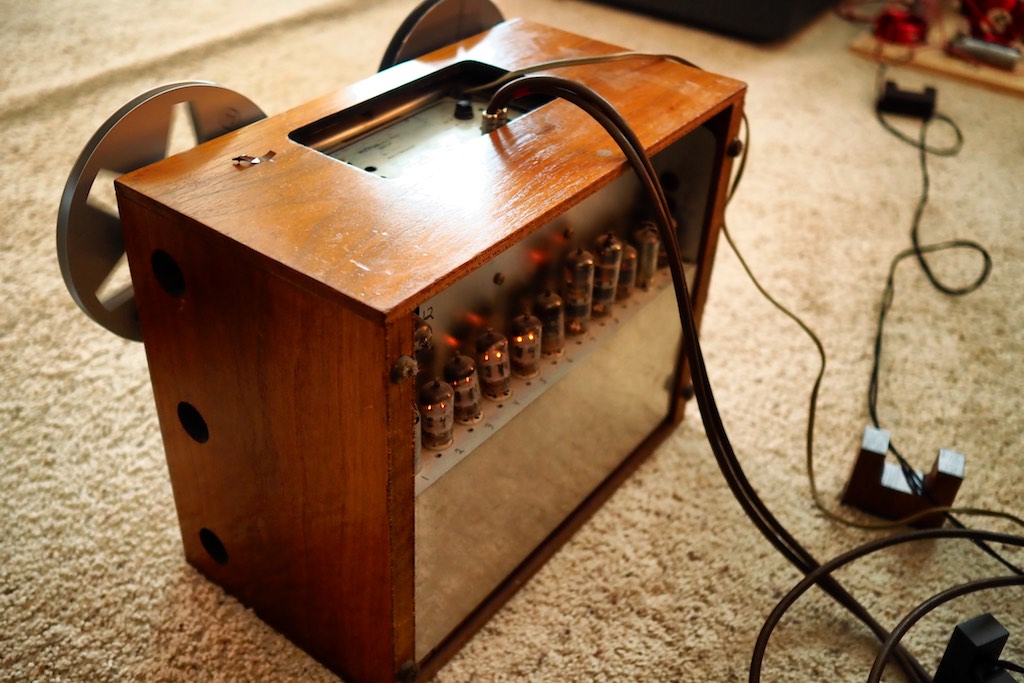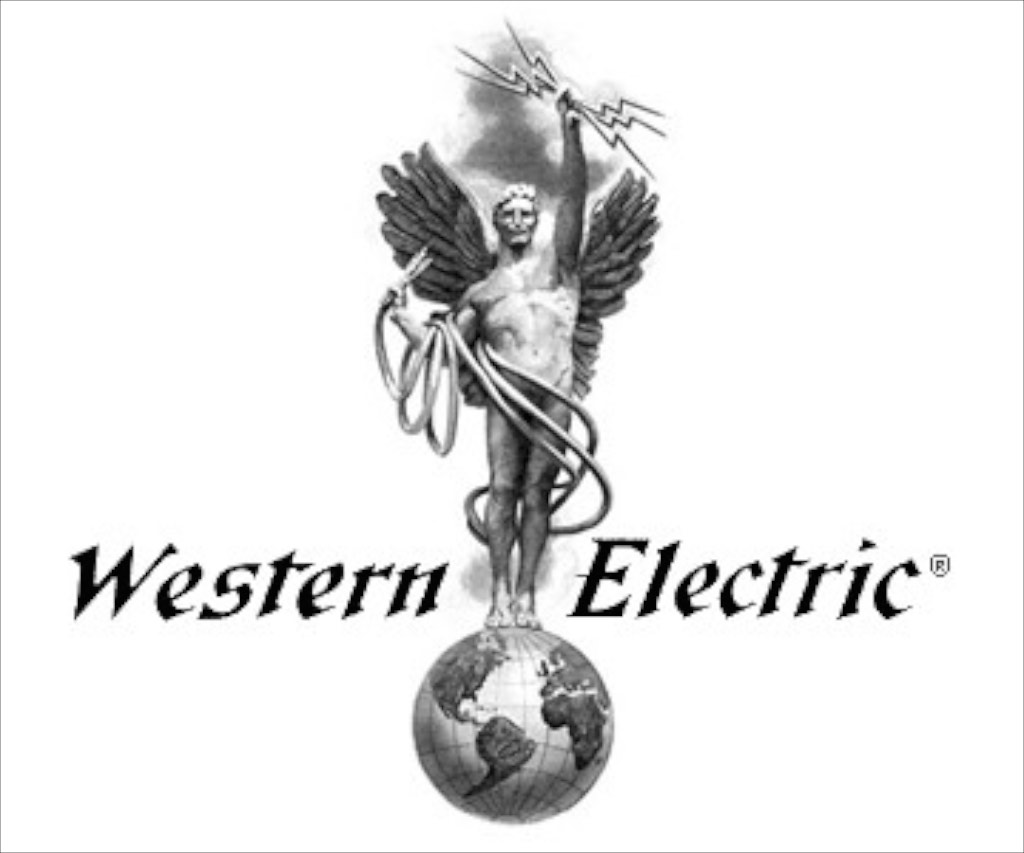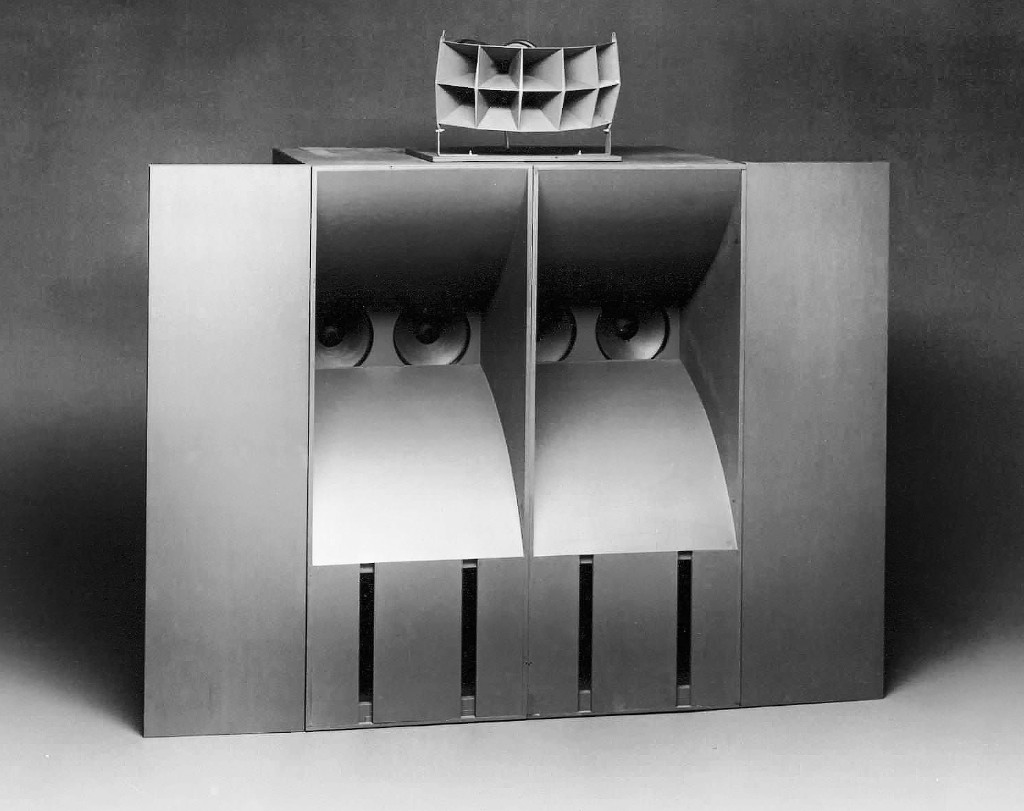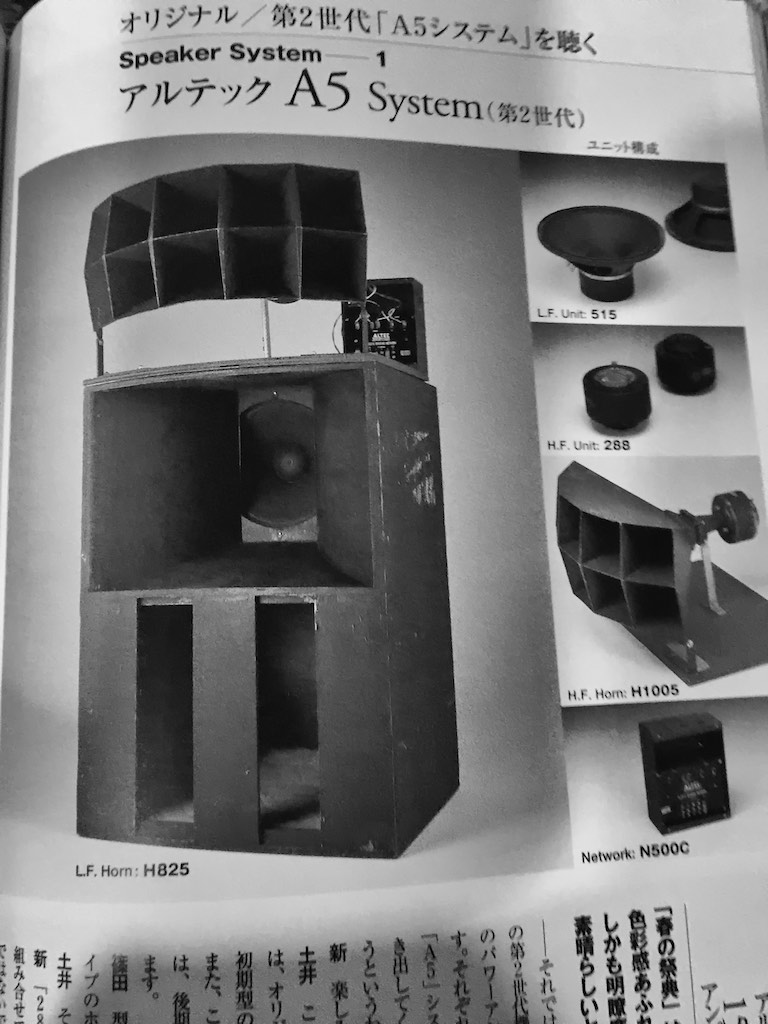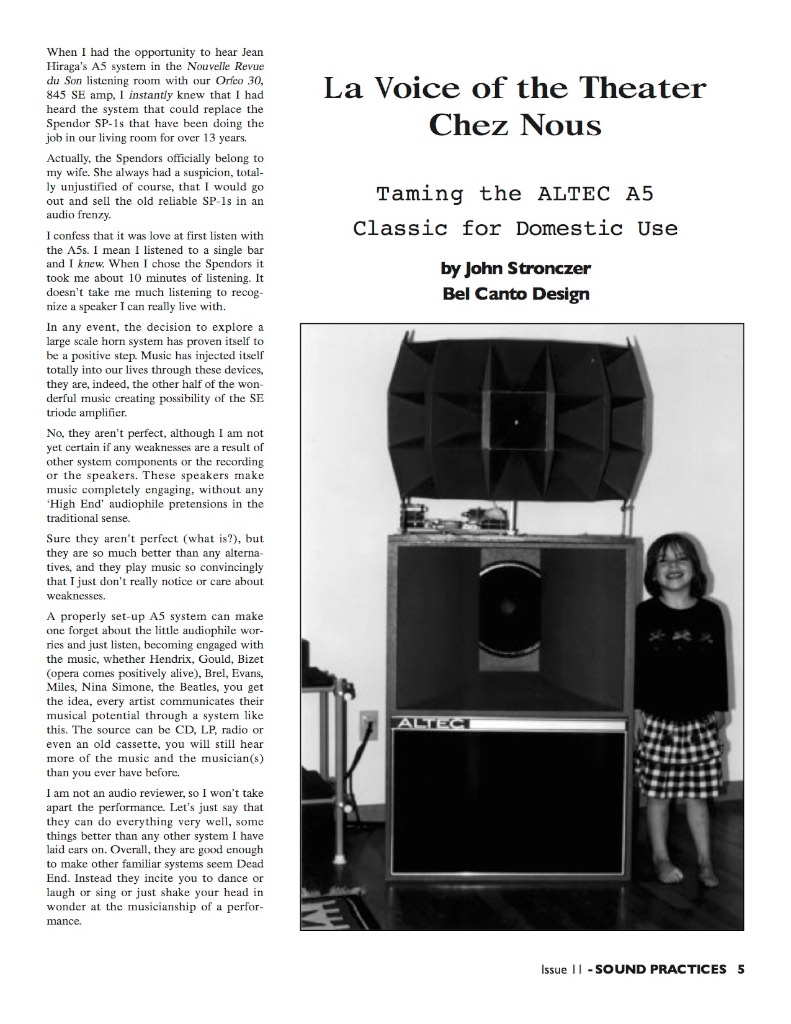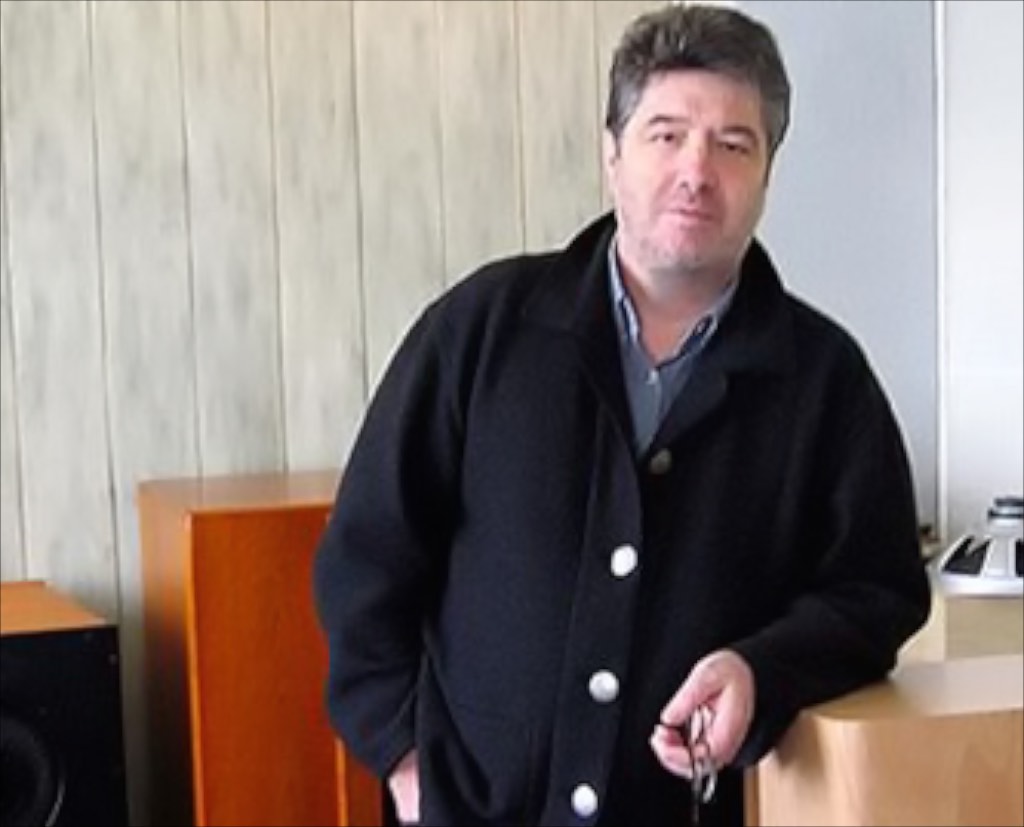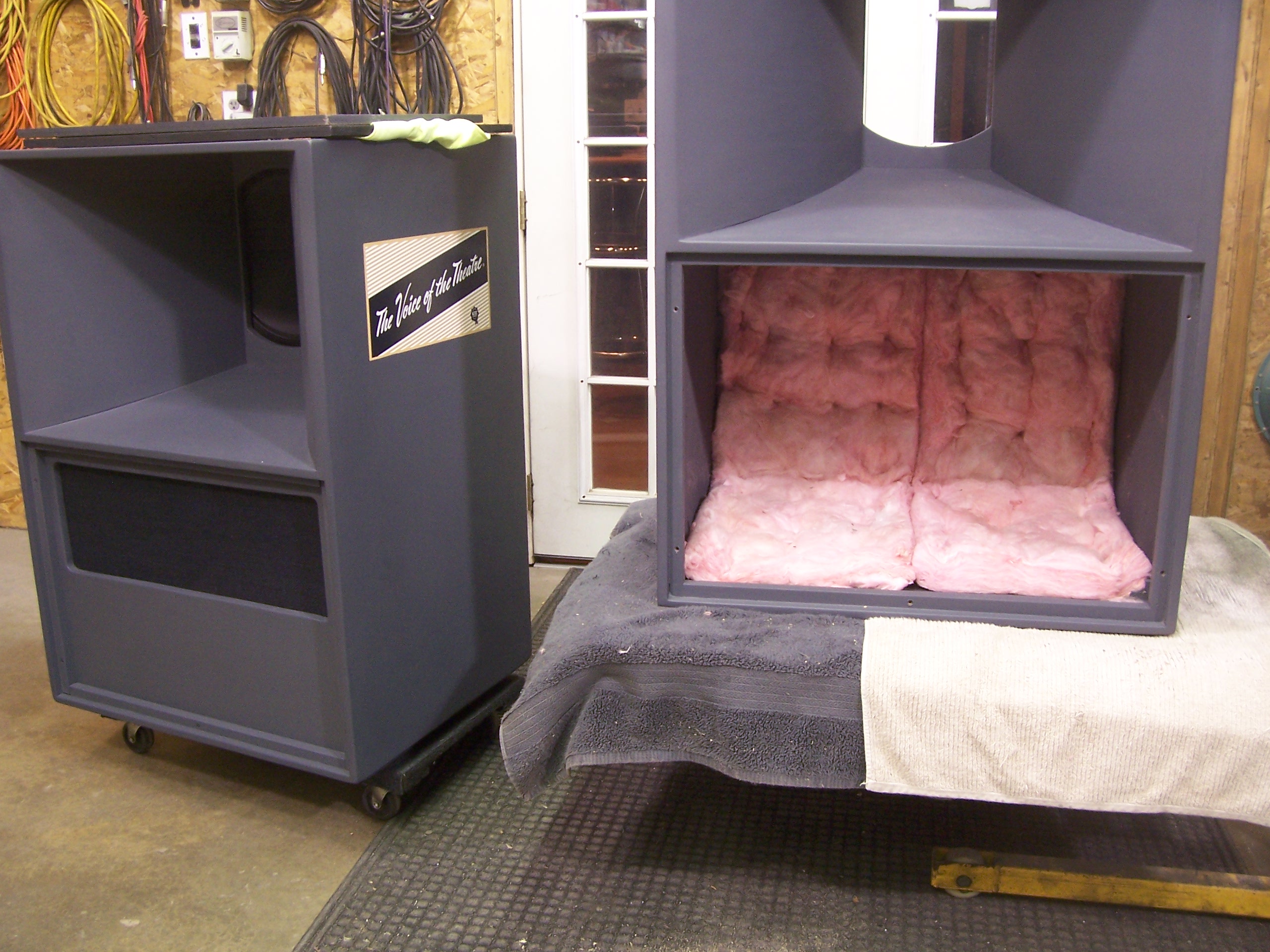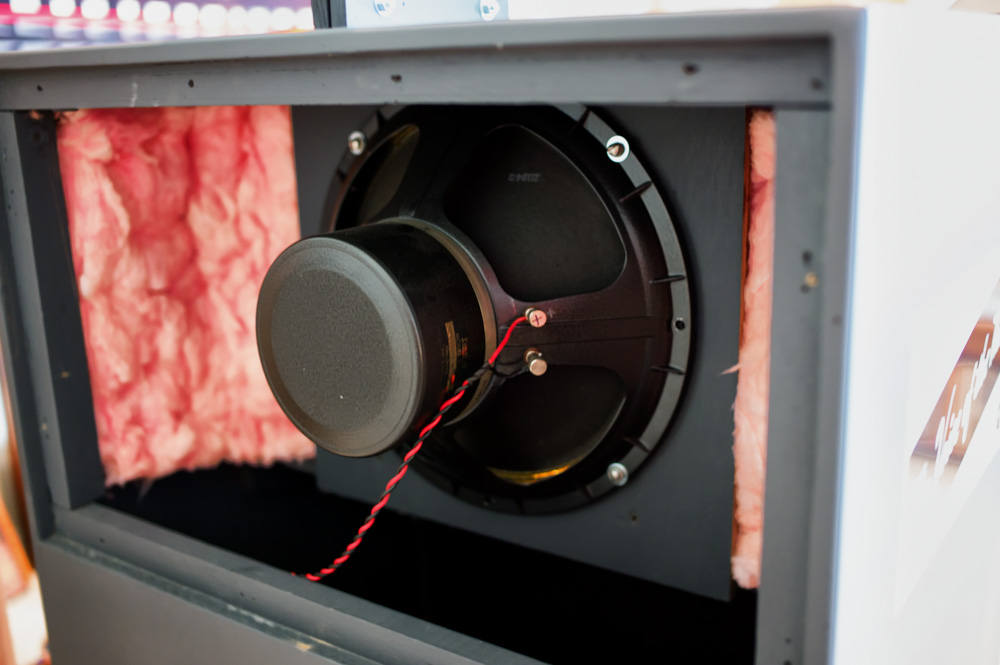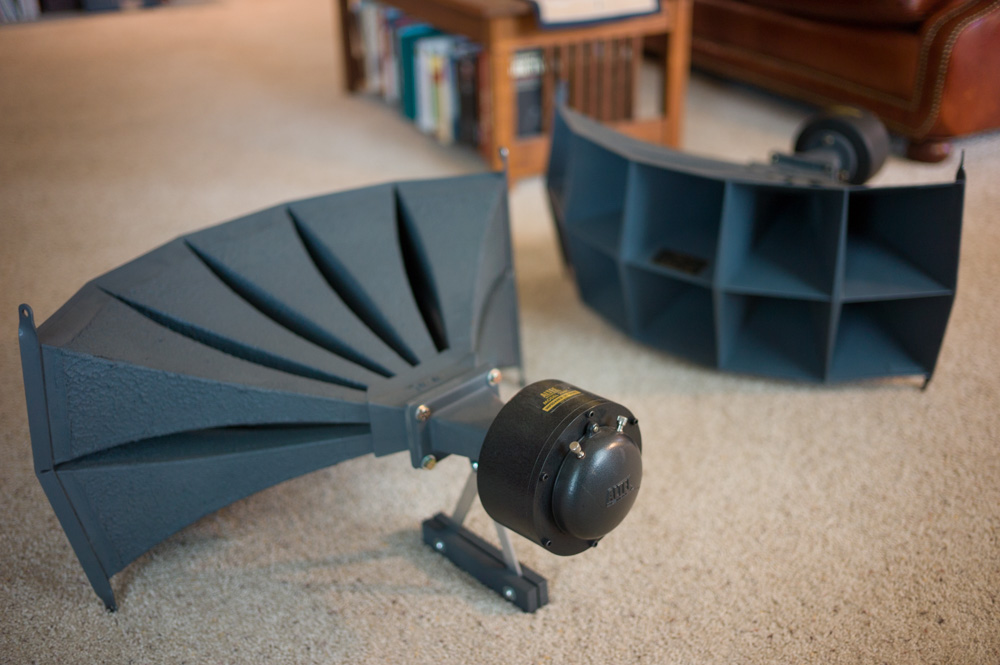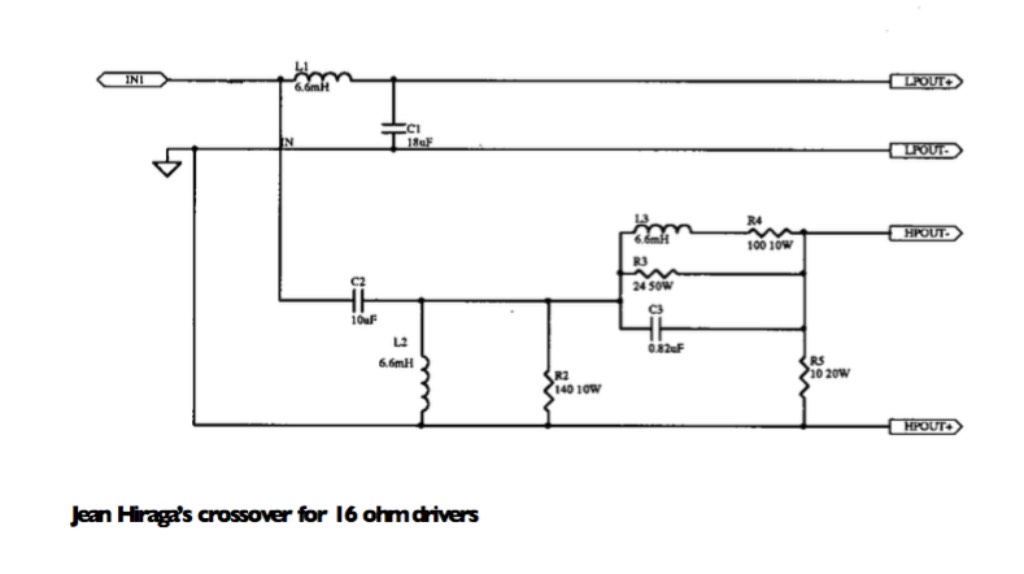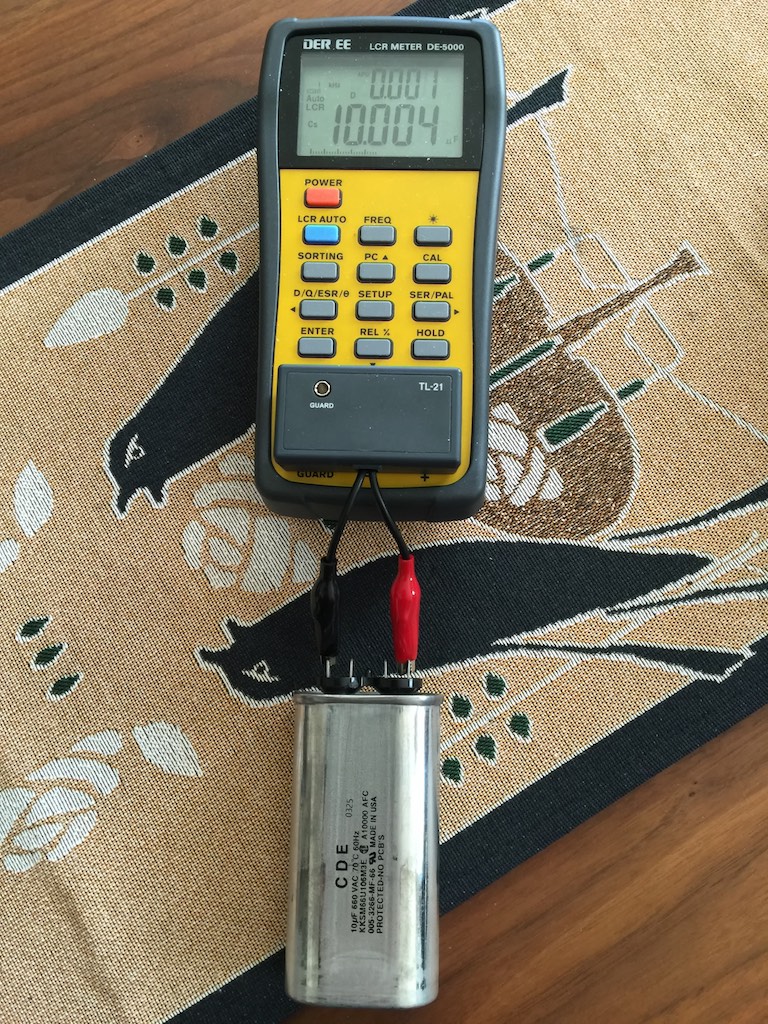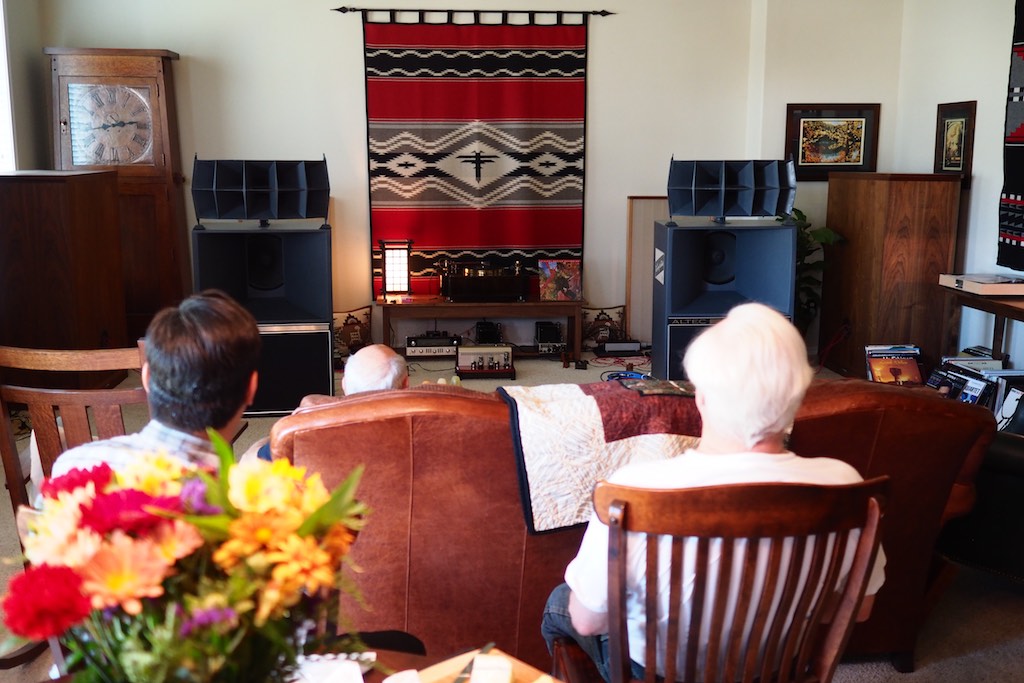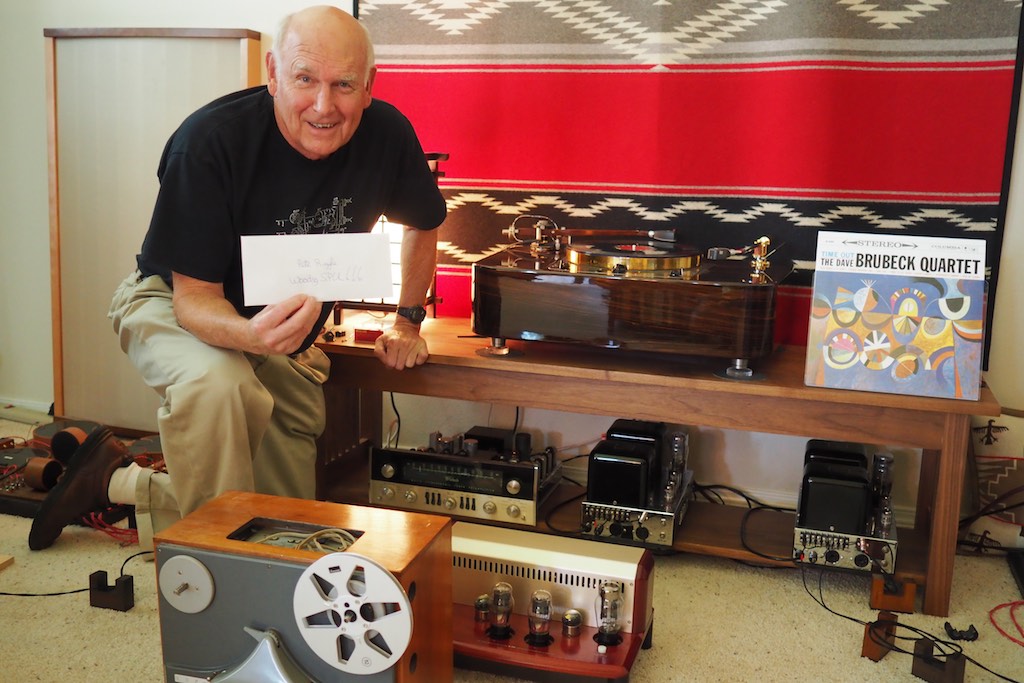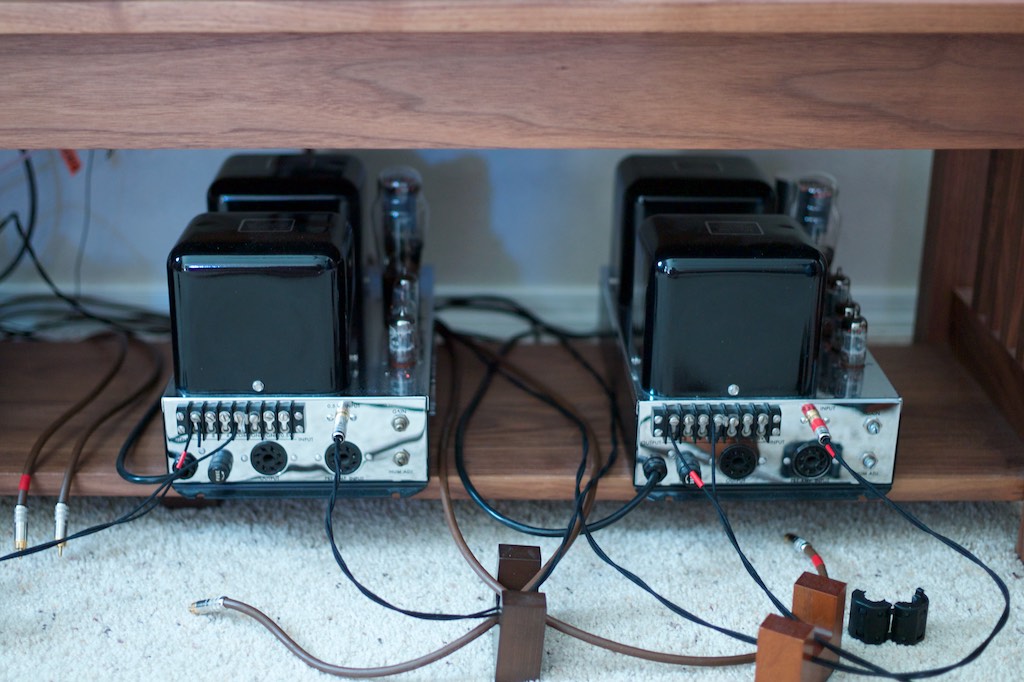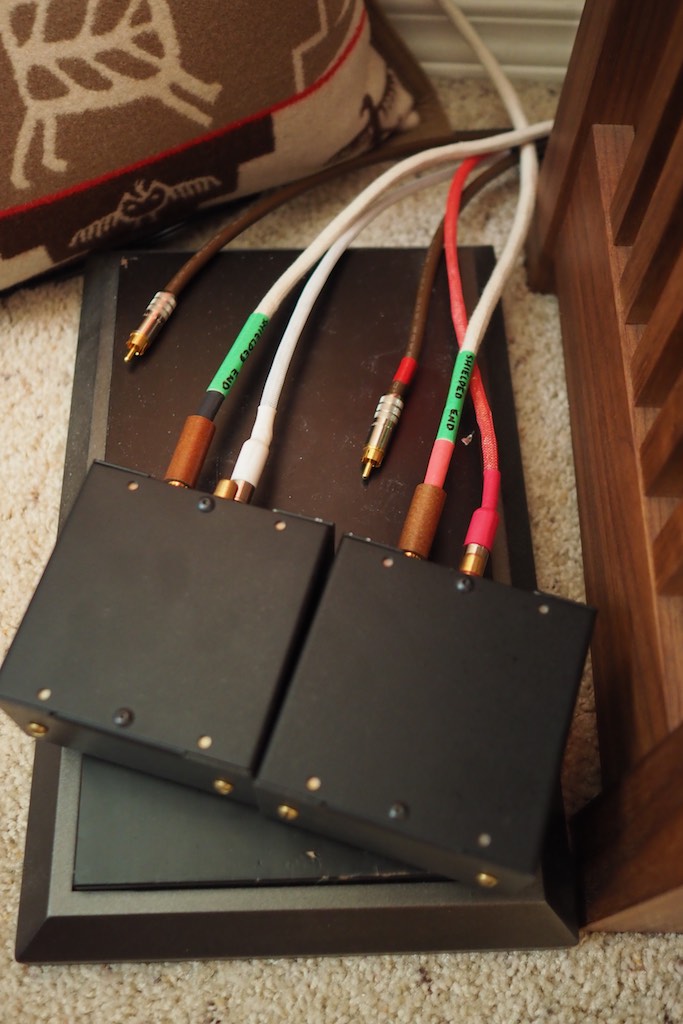It's always fun to get together with good friends, and I was delighted to have pals Leo, Pete, Ron, and Santos visit me for a frivolous Sunday afternoon of laughter, music, and hi-fi tomfoolery at Jeff's Place!
Besides a nice selection of food & wine to nip & sip on, the menu included:
1) Finalizing the crossover settings for the Altec A5 Voice of the Theatre project.
2) Auditioning a number of custom Duelund interconnects made up by Chris at Parts Connexion (which will receive a much more in-depth discussion in future blog posts). Chris at Parts ConneXion sent a nice selection of Duelund interconnects with two different types of silver wire (ribbon and solid core), and tinned-copper (DCA16GA) wire, all terminated with Duelund RCA's, and various approaches to shielding (connected at one end vs. connect at both ends in Yazaki-san style). Chris sent a couple more interconnects after I snapped the photo below, so I'll have a lot more to tell you about in upcoming blog posts! A big "Thank you!" to Chris for sending all these interconnect goodies to try!
3) Revisiting the Yamamoto Sound Craft A-08 45 SET that I reviewed back in 2004 for Six Moons.
4) Listening to Ron's recently rebuilt Revox reel-to-reel vacuum tube tape machine from his collection of R2R's. What a treat!
The Vintage Altec A5 Voice of the Theatre Project
Ok, let's start with the vintage Altec A5 Voice of the Theatre project. I know there's a lot of you that are new to Jeff's Place, so let me summarize what's happened up to now with the vintage Altec A5 Voice of the Theatre project.
Essentially, I've long desired to have a pair of the legendary vintage Altec Voice of the Theatre loudspeakers. After researching the vintage Altec's, and taking practical considerations into account (they had to fit inside my rather small house, meaning the huge A1's & A4's were out, even though I lusted after them), I settled on the more practical and domestic friendly A5 system from the Altec Voice of the Theatre range of loudspeaker solutions for theaters.
To give a little context about why I chose the Altec A5 as the basis for a project from the various Voice of the Theatre models that Altec produced, a brief Altec history lesson is in order (a longer and fun-to-read Altec history lesson is available at Ominous Valve here).
The Altec Voice of the Theatre loudspeakers were introduced to American theaters in 1945 after Western Electric exited the theater loudspeaker market. Altec offered a range of different Voice of the Theatre models that were designed as sound systems for American theaters depending on the theaters' size.
In the largest theaters the mammoth 2300 pound A1-X loudspeaker system was used, with its double bass horns housing six 15-inch low frequency drivers, along with four compression drivers and their horns to handle the high frequencies.
In most theaters the Altec A4 loudspeaker system was used, with its four 15-inch low-frequency drivers in 210 bass horns, and two compression drivers on a 1005 high-frequency horn (as above). I desperately wanted a pair of these Altec A4's, but I just don't have enough room in my house!
For smaller and more intimate venues the Altec A5 system (above) was a popular choice, with its comparatively svelte weight and more room friendly dimensions.
I read with interest John Stronczer's (Bel Canto Design) article that he wrote for Sound Practices readers way back in Issue 11, where he described hearing Jean Hiraga’s Altec-Lansing A5 Voice of the Theatre loudspeakers at the Nouvelle Revue du Son listening room in Paris.
In that article John said, “I confess that it was love at first listen with the A5's. I mean I listened to a single bar and I knew.”
John's article went on to describe how he adapted the Altec Lansing A5 Voice of the Theatre loudspeaker system to home use with the Hiraga-style crossover for his own music listening pleasure.
Keith Aschenbrenner of Auditorium 23 fame was also mightily impressed when he heard Hiraga-san's A5's. I fondly remember interviewing Keith for a Six Moons article I wrote back in 2005, where Keith told me wonderful stories about events that influenced him in his passion for audio.
One of my favorite stories from Keith was about an experience that occurred in the early 1980s while Keith was traveling to Brittany in the west of France during the holidays, and he came across the French enthusiast audio magazine L´Audiophile.
L´Audiophile had opened a shop in Paris to demonstrate their do-it-yourself (DIY) audio projects and to sell parts to the DIY hi-fi hobbyists of France. Keith told me that listening to music at L´Audiophile over their system was a shock to him. Keith told me that when he listened to L´Audiophile’s demonstration system using Voice of the Theatre loudspeakers, he immediately realized that his hi-fi system at home was a far cry from the musical realism and dynamic truths that the L´Audiophile system with those ancient Voice of the Theatre loudspeakers achieved so easily.
When Keith got back home he and his friend Norbert Gütte experimented with Voice of the Theatre loudspeakers and single ended amplifiers (SETs), with the goal of musical realism, which was sparked by the listening sessions at L´Audiophile.
Keith told me about how the combination of his first 300B SET amplifier with his own Voice of the Theatre loudspeakers was “… just like a musical Christmas present. In the beginning, we handled it like Sunday shoes. The harmonic integrity and musical realism were astonishing. We went from using it for special demonstrations only, to using it every day.”
The vintage Altec A5's used by Jean Hiraga became legendary in their own right due to the powerful influence they've had on so many listeners at his demonstrations, and Hiraga-san still brings his A5's out on occasion for enthusiasts to hear and appreciate.
Hiraga-san developed a crossover circuit that adapts the Altec A5's very nicely to a domestic listening environment, and Hiraga-san has received accolades from listeners every time he demonstrated his A5's to an appreciative crowd.
Those reports from John and Keith about how Hiraga-san's Altec A5's impressed them helped me decide that the Altec A5 Voice of the Theatre was the model I wanted to base a project on for Jeff's Place, so I commissioned Altec expert Gary Fischer to restore a pair of A5's for me (1, 2, 3).
For my restoration, I chose two 825B bass horn cabinets, two 16 Ohm 515B Alnico low-frequency drivers, two N-500-C crossovers, two 1005B 10-cell horns, and two 16 Ohm 288C Alnico high-frequency compression drivers, which is a classic Altec-Lansing A5 Voice of the Theatre combination of components from that period.
Gary did a beautiful job on his restoration of the A5's (below).
After unpacking the restore A5's I received from Gary, Ron and I installed them into the position that my Tannoy Westminster Royal SE's normally occupy.
Even though Gary had warned me that the A5's crossover balance was designed to powerfully project the high-frequency horns out through a theater screen into the theater's interior, and that the bass driver & horn was designed to couple with the movie screen to extend low-frequency response, and as such the overall theater balance was not really suitable for a home listening environment, I was still not prepared for how truly horrible the A5's would sound with the stock Altec crossovers in my living room.
Ron and I thought that the A5's with their stock crossovers were probably the worst sounding loudspeakers we had ever listened to. We marveled that anyone could have listened through that theater-style equalization in a domestic listening environment and still be able to recognize the ultra-high musical potential that lies hidden within the A5 loudspeaker system for the home listener.
Hats off to Hiraga-san for his insights into the amazing potential of the Altec A5 Voice of the Theatre loudspeaker system for the home listener, and for developing a crossover circuit that unleashes its musical potential!
We went to work on a Hiraga-inspired crossover solution that would adapt and optimize the Altec A5's for home listening.
Yazaki-san (SPEC Corporation) made the excellent suggestions of adding adjustability to the R3 notch filter in the Hiraga-san A5 circuit (above) in the form of a Clarostat (a variable resistor), using Ohmite Brown Devil wirewound resistors for the rest of the resistors in the circuit, and made a recommendation for a nice combination of Arizona Capacitors & SPEC ruby-mica capacitors to use in the C3 position.
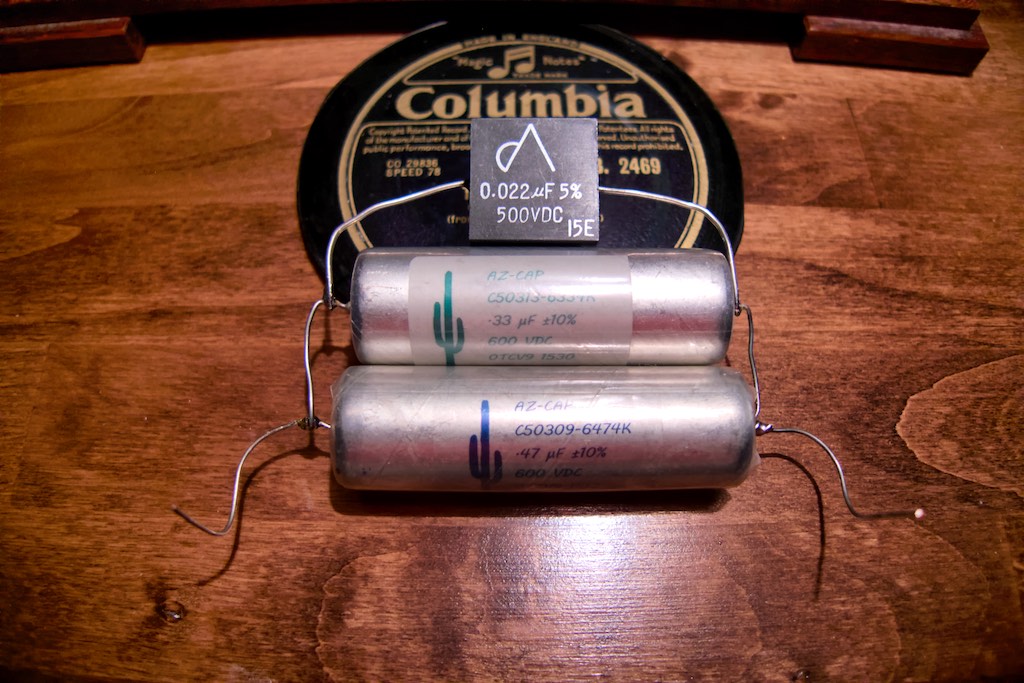
The combination of Arizona Capacitors and the SPEC Ruby-Mica capacitor as recommended by Yazaki-san for C3.
Pete Riggle (Pete Riggle Audio Engineering) made equally excellent suggestions to use motor-run capacitors in key locations (C1 and C2 positions) of the crossover circuit where high-capacitance values were required, to use L-Pads in the high-frequency crossover to 'shelve down' the output of the high-frequency circuits in order to bring the 1005B 10-cell horns with their 16 Ohm 288C Alnico high-frequency compression drivers into balance with the 825B bass horn cabinets and their 16 Ohm 515B Alnico low-frequency drivers, and to use copper McMaster-Carr setscrew lugs for direct wire-on-wire connections wherever possible, like I did with the Duelund-WRSE project..
The combination of these suggestions, and with a little fiddling around on my part with the capacitor combination recommended by Yazaki-san for C3, as well as a few other tweaks, has led to a truly magnificent sounding crossover for the Altec A5 Voice of the Theatre loudspeakers, and one that makes for a truly impressive home listening experience.
The resulting circuit is shown below.
I should also mention that I wired my A5 crossovers with the now legendary vintage Western Electric WE16GA wire internally, and for the crossover-to-driver wiring. The speaker cables are Duelund DCA16GA (as are the RCA interconnects that I'm using now), I found the combination of these two kindred tinned-copper 16 gauge wires to have considerable synergy for the Altec A5 Voice of the Theatre loudspeakers.
The Altec A5 Voice of the Theatre loudspeakers are sounding so musically magnificent now that it is really quite stunning ...
***
Tuesday October 4, 2016:
I have so much that I want to tell you about related to our audio adventures on Sunday, but time has not been cooperating - the busyness of life has been interfering with my writing!
Keith Aschenbrenner (Auditorium 23) contacted me this morning with a great suggestion for improving the Altec A5 project, so I'll tell you a little more about that in the future as I get a chance to try his idea. Keith is one of the true gentlemen of hi-fi, he's such a nice man, and such an inspiration! It was a pleasure to hear from you this morning, Keith, and many thanks for sharing your idea about the A5 with me!
I promise to provide a current state of the parts list for the Altec A5 Hiraga-inspired crossovers before long, or certainly as I start writing up the article about them for Positive Feedback, but I want to cut to the chase and tell you about the fantastic results I am / we are currently getting.
With Leo, Pete, Ron, Santos, and myself as the listening panel, we were able to get the crossovers dialed in with adjustments to the Clarostat and L-pads so that they truly brought out a remarkable level of musicality from my A5's. Stunning in fact. Incredibly musical, colorful, dynamic, and bristling with natural timbre, the A5's are really something to hear.
I haven't done the measurements to know exactly the value yet, but we ended up close to Hiraga-san's value for R3 with the Clarostat, and the L-pads were turned down significantly to balance the high-frequencies with the low-frequencies. All I can tell you with certainty right now is that the outcome was magical!
Now it's time to turn my breadboard crossovers into something more permanent, so I'm thinking about how to do that. I leaning towards mounting them inside the bass horn cabinets, just like Altec did with their crossovers, while at the same time I want to have easy access to the Clarostat's and L-pad's to allow for adjustability for different room, amp, and position of the stars conditions.
The Woody SPU Tonearm From Pete Riggle Audio Engineering:
As an aside, I've been doing a lot of writing on the Woody SPU tonearm article for Positive Feedback. I think its going to be a great article, and I hope you will enjoy it when it is published.
I'm really amazed with what Pete has accomplished with his Woody SPU tonearm, its performance with my Ortofon SPU Classic GM MkII stereo phono cartridge is truly profound.
I mentioned in an earlier post that I was buying the Woody SPU tonearm because I just couldn't bear to let it leave, it's just too good, and it takes my system to a significantly higher level of SPU playback!
The Woody SPU will replace one of the two Thomas Schick tonearms on my turntable. I'm keeping my second Schick tonearm for mono phono cartridge use, for which it works great.
The Woody SPU tonearm is my new reference for what is possible in tonearm performance with a stereo SPU, or for that matter, for the other stereo cartridges I have in my cartridge stable as well.
In the photo above I presented Pete with an envelope full of cash, as a reverse ransom of sorts, to ensure that the Woody SPU would not leave Jeff's Place. Thanks to Pete for being so gracious as to pose for this silly photo!
Ok, the evening has raced by once again, and it is time to stop writing for the night.
Check back soon for more about our impressions of the Duelund interconnects, the Yamamoto 45, and the Revox reel-to-reel. Lot's of good stuff to come!
***
Wednesday October 5, 2016:
As another aside, and as a prelude to the more comprehensive writing I'll be doing about the various Duelund interconnects that Chris from Parts ConneXion so graciously made up for me to try (Thank you again, Chris!), I want to tell you more about the results I'm getting with the shielded Duelund DCA16GA interconnect Chris put together for me to try with my Intact Audio custom SUT that I use with my Ortofon SPU Classic GM MkII.
As you might remember from my comments in earlier posts, I built a 2-meter pair of Duelund DCA16GA interconnects to try from my vintage McIntosh MX11oZ tuner-preamplifier to my vintage McIntosh MC30 monaural amplifiers in place of the Belden 8402 microphone cable interconnects that I normally use in that position, which are very fine interconnects in their own right, and which I highly recommend.
Anyways, the experiment was a resounding success, and the Duelund DCA16GA interconnects I built have displaced my Belden's from the MX110Z to the MC30 connections. The Duelund DCA16GA interconnects have a rich, timbrally correct, tonally colorful, extremely dynamic, and mesmerizing presentation that I have found to be rather addictive.
I was so impressed that I built a 1-meter pair of Duelund DCA16GA interconnects to try from my SUT to vintage McIntosh MX110Z tuner-preamplifier. Tonally they sounded extremely promising, but they were so noisy that they intruded on the music, so I reverted back to my Belden 8402 microphone cable interconnects.
Then Chris built a beautifully made pair of shielded Duelund DCA16GA interconnects to use with my dual mono Intact Audio SUTs, using some gorgeous Duelund RCA's, and with the shield connected at the source end, North American style.
Chris' shielded Duelund DCA16GA interconnects were very quiet on my SUTs, even quieter than my shielded Belden 8402 microphone cable interconnects. However, the great tone and musicality that I heard from the unshielded Duelund DCA16GA interconnects I had made was not present, and instead the sound was brash and raw with the shielded Duelund DCA16GA interconnects.
So shielded Duelund DCA16GA interconnects came out of the system, and the Belden 8402 microphone cable interconnects went back in.
I put Chris' shielded Duelund DCA16GA interconnects on my audiodharma Cable Cooker for 4 days for some conditioning, and then put them back into the system from the SUT to the MX110Z.
That's what we were listening to on Sunday during our audio adventures, with the shielded Duelund DCA 16GA interconnects being transformed with some run-in time on the Cable Cooker, and they sounded extremely good, and not unlike what I was hearing from the unshielded Duelund DCA16GA interconnects that I'm using on my MC30 monaural amplifiers.
So the shielded Duelund interconnects that Chris built are now delivering on the promise that I was hearing from the unshielded interconnects, having that same addictive rich, timbrally correct, tonally colorful, extremely dynamic, and mesmerizing presentation that I have fallen in love with.
Just to be clear, I highly recommend the unshielded Duelund DCA16GA interconnects in system positions where shielding is not necessary, and now I also highly recommend the shielded Duelund DCA16GA interconnects like Chris made in positions that are noise sensitive, like with my SUT to MX110 connections.
Well, once again I have run out of time to write this evening, so I'll be back with more soon!
Stay tuned, and thanks for stopping by!




